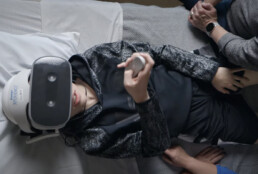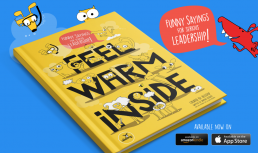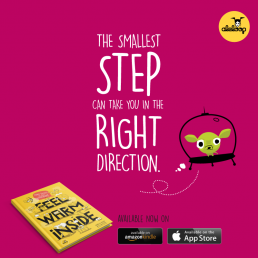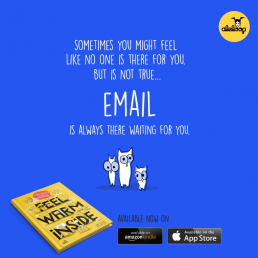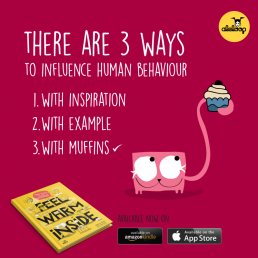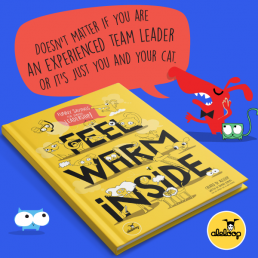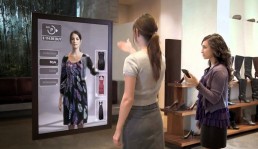Using VR in Hospital Treatments
Lifestyle,In English,Education,Creativity
Virtual Reality to Reduce Pain for Hospitalized Children
The VR technology enables pediatricians at children’s hospitals and healthcare facilities in the US to use the headsets as a procedural tool for critically ill young patients, primarily to reduce anxiety during mild to moderately painful procedures. By using VR as a calming distraction, several patients have been able to undergo these procedures whilst awake, cutting down lengthy recovery times, and reducing the need for medication. Lenovo Collaboration with Starlight Children’s Foundation® Shows how technology and hope can positively impact kids’ health to alleviate pain for young patients.
By using VR as a calming distraction, several patients have been able to undergo these procedures whilst awake, cutting down lengthy recovery times, and reducing the need for medication.

Improving the quality of life of hospitalized children
“Due to the distressing nature of treatments such as a lumbar puncture, where a needle is used to withdraw spinal fluid and sometimes administer medication, our patients often receive the procedure under general anesthetic. Virtual Reality can be used in place of general anesthesia to help tolerate pain, and in fact, it is having a profound impact on the quality of life of our hospitalized children. We are seeing children who used to require general anesthesia, now able to be fully awake with minimal medications.” Joe Albietz, MD, Medical Director at Child Life, Children’s Hospital Colorado
Digital Approach of Mental health during COVID-19
Since the pandemic started, social interactions have been limited, with authorities setting the maximum number of people in a group, in some cases imposing curfews. This all means that young individuals are subject to an increased risk of anxiety, social withdrawal, loneliness. Support groups and face-to-face services have been canceled, and many patients experienced relapses in mental conditions due to disruptions in school routines, which may serve as coping mechanisms. Children and adolescents have engaged with digital technologies so in many ways virtual reality therapy could be integrated to treat current mental health-related issues mentioned above.

Immersive VR to support mental health treatment
Virtual Reality therapy to treat anxiety, phobias, depression, stress, PTSD, and several mental health-related traumas. VR exposure therapy provides the opportunity for mental health professionals to not only reproduce real-life scenarios but also to adapt and control these environments to suit patients’ needs. This technology approach allows mental health professionals to evaluate, identify, and apply intervention protocols on patients’ fears and anxieties, in some cases showing quicker improvements, increasing the commitment to the therapy.
Watch the Stories
Programs that aim to integrate VR with traditional therapy techniques, improve the quality of hospitalized children and help with trauma.
A guide to raise entrepreneurial kids (Part 1)
In English,Education,Leadership,Creativity
To be at the top of the game, an entrepreneur requires creativity, empathy, communication skills, problem-solving ability, practical maths, and a knack for spotting something at the right moment and having the confidence to act. These key traits of entrepreneurs like presenting an idea, handle objections, or guide someone through tough decisions have their origin in the early stages of development and can be found at home or school in everyday activities. Let’s take a quick look:
1.Developing basic skills
To be at the top of the game, an entrepreneur requires creativity, empathy, communication skills, problem-solving ability, practical maths, and a knack for spotting opportunities at the right moment, and the confidence to act. These key traits of entrepreneurs have their origin in the early stages of a kid’s life and can be found at home or school in everyday activities. Although these kinds of skills -presenting ideas, handle objections, or guide someone through tough decisions- are often associated with entrepreneurs, are in fact the basic set of skills for kids that grow up ready to take on the world, ultimately steering them towards the right opportunity. Kids that develop the passion, the attitude, the skills to spot opportunities, resilience, faith, not afraid of critics and failures, are prepared to handle whatever life throws their way.
Starting at home: There are so many activities and fun things for kids to Inspire and nurture these skills. From negotiating what’s for dinner, or making decisions about planning the week, putting someone in charge of a task or a special event at home, like planning a Bday party.

2.Home-made skills
Raising kids with an awareness of entrepreneurship and its core skills can change their life for the better. Kids don’t need to actually be running a business, employing people, or pitching ideas to investors to gain these skills. Being a kid is already a serious business for them, so learning these skills should be fun and lighthearted. Kids are already practicing these skills at home at one point or another: pitching, negotiating, decision making, leadership, customer service, and creative thinking.
Practical examples: there are so many activities and fun things for kids to Inspire and nurture these skills. From negotiating what’s for dinner, or making decisions about planning the week, putting someone in charge of a task or a special event at home, like planning a Bday party. Challenges can be really fun and character-building.
Encouraging healthy debate about ways to help people or coming up with ideas to solve a problem so they can create their own framework for decision-making. Simple ideas that are fun, entrepreneurial and valuable. The earlier someone learns these skills the more second nature they will be in the future.
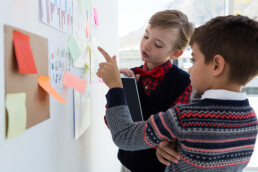
3. Opportunities are everywhere
Finding entrepreneurial opportunities involves playing and observing real-life situations. Allowing kids to experience and interact with real-life entrepreneurial scenarios will open their eyes to the possibilities. Not only in opportunities but also different people with different skills. Being open to opportunities means seeing the possibility and abundance of options and results, incorporating the notion that opportunities are everywhere, they just have to be found like a treasure hunt.
Great entrepreneurs look at problems and see solutions and disruption it’s only a chance to add value. They constantly think of new ideas for products, services and new businesses. Their brains become trained to seek out opportunities, working their idea muscles every day until eventually, success becomes real. Inspiring kids into an opportunity-seeing mindset involves thinking in that way yourself.
Foster questions that make kids think and observe their own paths and actions, opening playfully to the idea of “Why not” or “What if” Bring entrepreneurial opportunities closer by talking about their everyday activities and connect them to businesses or professions around them. Ask how they do, and how they do it, and which problems they encounter. Understanding the needs of the businesses all around you helps kids to become aware of possibilities, sparking ideas they could get involved in.
Practical example: observe situations around your home, neighborhood, or even current events that present a problem and need a solution, and bring up what could be done to solve the problem and “how could you be part of the solution, and what could you do about that?” Things like organizing the attic or organize a garage sale, or transforming a room into a ‘painting studio’ or maybe learning about things that might stir interest or relatable to kids like the technology behind video communications, healthcare professionals, or the different disciplines behind making videogames or a cartoon show. Kids will be fascinated.

Situations that need a solution at home or in the neighborhood and bring up what could be done to solve the problem and “how could you be part of the solution.
Wellness, the new luxury
Lifestyle,Music,Style,Analytics,MarketingResearch,In English
Refreshing the concept of luxury
In China, a country renowned for its efficiency and high-performance workers, Gen Zers have embraced a more relaxed philosophy as a form of protest against a system they now feel is rigged for the rich and powerful. This ‘burnt out’ generation of discouraged millennials worldwide has been rebelling against unbalanced wages, intense work schedules, and a lack of job security, even before the pandemic, and after isolation and distress in result, people are looking to adjust their lifestyle to a more balanced, healthier experiences.
Many consumers have learned that comfort is more important than being fashionable. Wellness and self-care have suddenly become more of a priority than ever. Global brands should soon expect the traditional luxury fatigue. Although is a challenge, is not necessarily a bad thing, but is an opportunity to creatively refresh their portfolio and products offer, introduce new points of view that satisfy both needs. Wellness and aspirations.
Wellness and self-care have suddenly become more of a priority than ever and have the potential to revolutionize the luxury industry. Luxury brands can inspire this newfound awareness to create healthier and smarter lives.

Reducing the gap between traditional luxury through health and wellness
While consumers integrate wellness into every aspect of their daily lives, so there’s a new perfection that brands could change in their narrative. Outdated vertical luxury definitions fail to understand the convergence and multidimensional nature of wellness. Across sectors such as beauty, fashion, travel, and fitness, wellness is the world’s fastest-growing market segment. And affluent consumers are willing to pay a premium for perceived wellness solutions. Driven by Millennials, social media and online DTC retail, wellness brands can more easily grow globally.
Wellness has become a priority for most luxury consumers. A better understanding of the consequences of our lifestyle choices, and digital health trackers are contributing to inspiring modern affluent consumers to live healthier lives. Luxury brands need to integrate elements of wellness both in their offerings and marketing to capture increasingly health-conscious shoppers. An effective approach to wellness seizes opportunities to bolster a sustainable, healthy way of living whether through partnerships, cross-category expansions, and innovations, or new business models.
Affluent consumers demand natural and organic products. Fashion shoppers are drawn towards high-end athletic/leisure outfits both comfortable and stylish. Bars and restaurants are being replaced by gyms and fitness studios becoming new social hubs for affluent new generations.
The deep desire for health and wellness is radically reshaping what luxury brands need to offer to their consumers and how they communicate the value of their goods and services. Leading brands will be the ones whose efforts make positive contributions and empower consumers in their journey to wellbeing. Wellness is profoundly transforming the luxury industry. Brands creative, narrative and storytelling will benefit to incorporate elements of health and wellness that will resonate with the newfound awareness and new market.

Deepest renewal. La Mer’s iconic Miracle Broth™ reveals a bright, well-rested look.

Looking for a way to elevate your daily workouts or a way to turn heads at the gym? Louis Vuitton has just released the perfect accessory.
Inspire wellness through a new approach to luxury
On the domestic front, the retail industry has also experienced challenges since the onset of the pandemic. From margin pressure and shift to online shopping, affecting the footfall of domestic stores, malls, etc. Again, I believe all of this is a unique opportunity to create better digital experiences and cost-effective approaches, from creative to product development. The right digital initiative can help us measure effectiveness, traffic and better connect and engage with key stakeholders, inside company units, partners and audiences.
Through digital channels, with an aligned 360 vision across platforms, relevant narrative, brand commitment, proactive, small initiatives and MVPs that allow us to know better our audience and consumers, creating a customer experience that is engaging, personal, healthy, and valuable. Luxury brands are starting to catch up with the market trends into wellness awareness inspiring us to live healthier and smarter lives. A new luxury mindset, where the true luxury is reflected in wellness, comfort, and work-life balance. Accordingly, brands should be prepared for this new mindset that the YOLO economy has ushered in. In fact, today’s YOLO economy has the potential to revolutionize the luxury industry. COVID-19 was the catalyst, but this change was a long time coming.
UX Designers: Bestias Fantásticas y dónde encontrarlas.
Tech,Design,EnjoyAnalytics,Marketing,Research,Leadership,En Español
Cada vez que me preguntan “¿Que es un diseñador de UX?” Lo primero que pienso es… ¿por donde empiezo?. Parecería que un especialista en UX es como un animal mítico del que todos hablan y, pocos han visto uno.
WTF es UX Design?
El primer punto en este camino es aclarar que que diseño de UX no es diseño visual. Muchos conectan equivocamente al especialista en UX con diseño gráfico y, viceversa, muchos diseñadores graficos son “diseñadores UX/UI” (esta mezcla de disciplinas me da miedo!!) Si bien ambas disciplinas comparten ADN, la realidad es que son dos criaturas muy distintas. El rol de un especialista en UX es muy diferente. Es importante tener una vision holistica de las disciplinas que intervienen para generar una experiencia de usuario, pero el profesional de UX es una bestia aparte, a menudo, incomprendida por las empresas, y considerada como un lujo. “El diseño no es sólo cómo se ve o cómo se siente: Diseño es cómo funciona”, nos dijo una vez Steve Jobs y, realmente estoy deacuerdo.
Diseñador es alguien que aplica metodologías y prácticas de Design Thinking para resolver cualquier tipo de desafíos, ya sea de negocios o personales. Quizás aplicas estos procesos durante tu dia y no te das cuenta. Yo he visto a mi madre “Prototipar” con post-its haciendo una lista de mercado y como podría ahorrar tiempo en el supermercado a partir de un diagrama de ‘navegación’ y sus ‘objetivos’ de compra.
El segundo punto en esta definición tienen que ver con el enfoque que se busca en cada proyecto o cliente. Para algunos, el rol del UX specialist va mas allá de la plataforma y ven a los usuarios como clientes que utilizan herramientas digitales para interactuar con las organizaciones y sus productos. Para otros, es una especialidad dentro de la experiencia del cliente, pero en cada uno de sus definiciones, el punto en común es el usuario.
El especialista UX busca representar y comprender al usuario -y aun mas allá de eso- educar a las organizaciones y equipos de trabajo, acerca de las necesidades, desafíos y puntos críticos de los mismos, y luego alentar al equipo, trabajando en conjunto para crear una mejor experiencia.
Perfiles de UX designers segun su background
INVESTIGADORES
Disciplina de nicho, muchas veces es considerada un lujo más que una necesidad. Los investigadores ayudan a las empresas a desarrollar un plan de investigación para conocer en profundidad a su publico y usuarios a través de diferentes metodologías. Encuestas, entrevistas, pruebas de usabilidad y resonancia de marcas, estudios etnográficos, etc, proveen a las empresas datos cuantitativos y cualitativos revelando preferencias, detalles, lógica de interacción y emociones para el uso de productos y cumplimiento de metas de negocio.
ESTRATEGAS
Desarrollan proyectos de investigación y diseño. Toman los datos y conclusiones obtenidos en la investigación y los sintetizan en un sistema de diseño de alto nivel, crean identidades o perfiles de usuario, escenarios y journeys. Los estrategas generan un sistema de diseño abstracto que sirve como modelo conceptual para crear un modelo concreto y real.
ARQUITECTOS DE INFORMACIÓN
Los arquitectos de información son el punto de transición entre la estrategia y el diseño, aportando una vision general del usuarios a quienes esta destinado el producto o servicio y resolviendo el diseño abstracto en una experiencia completa. Desarrolla los site maps, wireframes, describiendo en detalle cómo las interacciones del usuario deberían comportarse desde un punto de vista funcional.
DISEÑADORES DE INTERACCIÓN
Muy parecido a los AI, con la diferencia que su resultado proviene de la evaluación Heurística (EH), un análisis de usabilidad y calidad de uso de una interfaz desde patrones existentes, relación entre el sistema y el mundo real, consistencias y estándares, flexibilidad de uso, diseño minimalista y/o experiencia personal.
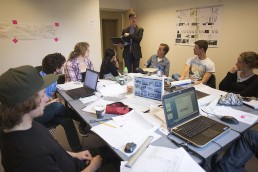
STORYTELLERS
Proporcionan una comprensión detallada de las estructuras de contenidos (noticias, sub-títulos, teasers, cuerpo, imágenes, etc.), taxonomías (estructuras jerárquicas para categorizar y relacionar el contenido) y el storytelling emotivo que forma la historia generando en una narrativa global que crea un impacto y adhesion en el usuario.
DISEÑADORES VISUALES
Los diseñadores visuales tomar el wireframe y lo convierten en diseño, recursos o assets necesarios para hacer un producto real. Muchos diseñadores cuentan con background en print, tipografías, identidad de marca, etc. Los buenos diseñadores visuales entienden que la usabilidad, elementos cognitivos y jerarquías de la UX pueden son afectados por color, tipografía y composición, teniendo un fuerte impacto en la experiencia de usuario más allá del atractivo estético.
INGENIEROS DE UI
Transforman los documentos de diseño en productos reales. Dependiendo del nivel de complejidad de los proyectos, pueden tener un background como ingenieros de software o experiencia en desarrollos web. Son pocos los profesionales de este subconjunto que puede realizar todo, desde investigación hasta implementación.
Espero esta mini guía sirva de ayuda a la hora de buscar un perfil, ya sea generalista, especifico o híbrido de estas disciplinas. Lo importante es tener en claro cual es el foco del proyecto o de nuestro cliente, nuestro primer usuario. Te comparto una frase de Donald Norman, un capo de la ciencia cognitiva, Co-Fundador del grupo Nielsen y ex VP de Investigación de Apple:
“No es suficiente que creamos productos que funcionen, que sean comprensibles y utilizables, también necesitamos construir productos que traigan alegría y emoción, placer y diversión, y además, la belleza de la vida a las personas”.
Creating a better brand experience
Lifestyle,Music,StyleMarketing,In English
DFTR is one of the cornerstones of growth and development for luxury brands. Travel corridors are the heartbeat of the experience, it’s a glamorous ‘elevators pitch’ a brief opportunity to connect, capture and engage with customers. The DFTR channel also functions as an export channel for consumers traveling between countries and regions across the globe. In a way like ‘brand ambassadors’ expanding the brand to their country of origin. All the changes in recent travel patterns create a unique opportunity for business & brand development.
I.Faster, Creative, Cost-Effective initiatives
Margin pressure, a shift in behaviors, footfall downfall in stores, etc. even challenging, foster a unique opportunity for better and small initiatives to connect and understand our consumers. We need smart, proactive, and cost-effective approaches, from creative marketing to product development. A 360 real-time vision across platforms, that knows and inspires audiences to create a better experience and lifestyle value, from packaging to an email marketing campaign, and connects with business partners, and even stakeholders in the team.
II.Connect creative strategy to your audience mindset.
Storytelling goes beyond language, screens, or platforms. It is something personal, a compelling mix of different experiences from both audience and brand content. We should inspire our audiences to create a healthier & balanced lifestyle. Technology has enabled new ways of extending and hosting the narrative and a different vision to understanding and implementing it. Technology enables a way to capitalize on consumer needs, share your commitment and focus to different audiences that otherwise would be impossible to reach. Segmentation is a tricky word, and without the proper reading can get you stuck, particularly in multifaceted markets. Many companies experience shortly lived growth because of this. A digital strategy is far more challenging than posting videos, regular updates, or pictures on social platforms. It’s an all-across brand collaboration to build a sensory experience and the proper narrative to drive the right story that understands the audience’s mindset.
III. Understand audiences beyond analytics.
Personalization and behavioral targeting will give you the conversion, but we also look for engagement and connection with our audience. I’m not talking about just creating an ad in a language like Spanish or Chinese. I’m referring to content that appeals and is relevant to customers where they are. Knowing the market goes beyond analytics and statistics, Is understanding that content is a way to expand your brand universe to reach new and existing audiences with innovation and creativity, a fresh perspective on the delivery/platform, connecting with customers where they anytime, anywhere. No matter is an airport or the gym.
APAC corridors are the leading driver on the luxury market travel retail. That’s why understanding the traveling consumer and adjusting POS creative strategies to better connect with clients in a more personal way using technology and partnership with retails, airlines, etc. I experience this while working with United Airlines digital creative programs for the Asia Pacific.
IV. Align Digital & In-Store experiences.
The balance between store experience and digital experience is challenging. Creating cross channels experience is not just an app or an online campaign. Brands need to stay cost-effective in any of the verticals, but beyond that, is also how the market is moving on. The combination of digital & sensory experience is vital. While working in Quadramma I created several digital experiences with this in mind. Buyer patterns are constantly changing but your message should remain constant at every touchpoint.
We partner with Starbucks to create their first mobile experience in LatAm that was really a huge hit: customers could share a personalized holiday message to friends and acquaintances decorating their favorite seasonal drinks. Or Jazmin Chebar with an in-store app with exclusive content. Once customers were in the stores, they took pictures, share content, watch live streams, and use in-store iPads. Beyond the product, we wanted to connect with what the audience thinks, does, and wants.
New Book on Amazon
Lifestyle,Sport,MusicStyle,In English,Leadership
New Book on Amazon!! Feel Warm Inside: Funny sayings for leaders of all ages.
Feel Warm Inside: Funny Sayings for Serious Leadership is the perfect antidote to traditional books about leaders and leadership! This book is a funny, honest and imaginative view of life and leadership, that will help you on your very serious journey of becoming the leader you were meant to be. Doesn’t matter if you are an experienced leader or if it’s just you and your cat…this book is for you. After all, the true measure of a great leader is not their title, or the location of your office, but their ability to adapt. Good attitude, humor, and the right mindset can help you navigate into the weird, unpredictable and ever-changing world of adulthood…and the workplace.
Feel Warm Inside is a collection of funny, motivational sayings that celebrate the irony of adulthood while at the same time delivering a thought-provoking and often hilarious dose of self-awareness and inspiration for leaders of all ages. You don’t have to be perfect, you just have to be you. You are far better that your Instagram pic.
La realidad aumentada (AR) y la realidad virtual (VR) han dejado de ser una “novedad” para transformarse en una realidad, impulsando no solo un modelo de usabilidad del futuro, sino también un potencial cambio de paradigmas en el ecosistema de negocios.Esta tecnología virtual no está solamente limitada a los juegos o al entretenimiento. E-commerce, transporte, medicina y moda se verán revolucionadas en el futuro cercano que, más que una moda tecnológica, promete ser una nueva forma de experimentar el mundo. Si bien estamos acostumbrados a las experiencias digitales, el diseño y desarrollo de experiencias e interfaces para VR y AR siguen siendo algo nuevo y muchas veces implican un gran desafío, tanto desde lo tecnológico hasta su usabilidad. Miremos algunos conceptos claves, desafíos técnicos y modelos de negocio posibles de esta nueva manera de interpretar la realidad.
Realidad Premium
Las interfaces de usuario de AR han mejorado mucho, más allá del aspecto tecnológico, presentando la información de forma 'más natural', en tiempo real y principalmente, donde se encuentra el usuario. Pero en definitiva, la AR no deja de ser una “opinión” o punto de vista respecto al mundo real. Para las empresas puede representar un objetivo que, incorpora información adicional para aumentar esta opinión. Todas las formas de ver el mundo son opiniones: buenas, malas, útiles, etc. pero al fin son solo eso, opiniones, expresadas a través de datos (texto, imagen, vídeo, etc.). Por ejemplo, una imagen satelital de tu barrio (realidad) cubierta con nombres de calles, flechas u otra información es una 'aumentación'. En sentido amplio, el mundo es una plataforma y lo que vemos representado visualmente y como interactuamos, es la UX de nuestra vida.
Herramientas de diseño AR/VR
Antes de pensar en diseñar una interface de AR/VR, deberíamos preguntarnos cómo funciona. Las herramientas para diseñar y desarrollar prototipos de interfaces de realidad virtual y aumentada son diferentes de las utilizadas en el diseño y desarrollo de aplicaciones digitales tradicionales, por ejemplo, InVision, Adobe o Prototype, etc. Incluso no solo el software sino también tenemos que contar con una maquina potente como para procesar toda la información y en algunos casos gafas especiales o dispositivos para testear los resultados. Incluso para los diseñadores es difícil encontrar inspiración y más aún encontrar información sobre buenas prácticas y metodologías de desarrollo de AR/VR, ya este campo esta “virtualmente” inexplorado. Existen miles de fuentes y libros acerca de prácticas y metodologías de desarrollo de web y mobile, pero para diseños virtuales muy poco se sabe, y hasta podemos contar con los dedos de una sola mano casos de éxito comercial.
¿Como funciona el proceso? Un sensor (cámara) observa parte de la realidad. Esta imagen se combina con metadatos/catalizadores (etiquetas de geolocalización, gráficos o códigos específicos a nuestra app) y desencadena un evento correspondiente. Por ejemplo: Vamos a un museo o un lugar histórico, y una etiqueta de geolocalización en nuestra app o dispositivo nos muestra un gráfico sobre una pintura o un monumento. Esta 'match' de metadatos sobre el objeto o lugar recupera la información pertinente al respecto, combinando elementos sobre la imagen original, desencadenando un evento que muestra información pertinente.Para realizar este proceso los dispositivos tienen que contar con sensores de alta calidad, conexión en tiempo real y una UX clara y precisa. Comprender “la escena” es clave, para poder activar el ‘matching’ de información y generar la imagen “aumentada”. Estos elementos relevantes se obtienen a través de la interacción con el usuario, captando su atención a medida que observemos su contexto inmediato, intención y comportamiento, por ejemplo, seguimiento de mirada, tacto, gestos y reconocimiento de voz, determinando qué componentes del mundo real aumentar
Metodologías para diseñar interfaces AR/VR
Si bien se han producido algunos desarrollos exitosos, continuamos en una etapa de investigación y desarrollo. Empresas como Apple, Amazon y Google actualmente impulsan esta tecnología. Pero la realidad es que estamos ‘jugando’ o experimentando y los resultados de nuestras interfaces todavía no sean lo suficientemente intuitivos y de gran usabilidad como con nuestras appss web o mobile. Aunque compartimos muchos parámetros y disciplinas con nuestra contraparte mobile, crear aplicaciones de AR/VR ni se compara con ella. Una experiencia o interface de AR/VR mal o pobremente diseñada podría poner en peligro la integridad física de sus usuarios. Sumergirse en una experiencia de realidad aumentada o virtual es otra historia. El año pasado estuve en la muestra de Björk y hubo gente que salía con dolor de cabeza, mareada y desorientada. He visto gente caerse de sillas en eventos con gafas de realidad aumentada.
Asimismo, imágenes y arte que parecen espectaculares y vibrantes en un website, en AR/VR no funcionan. Los desarrolladores deben ser precavidos en este sentido. Conducir un testeo de usabilidad de estas tecnologías es todo un tema, además recordemos que estamos trabajando en 3 dimensiones. Técnicas que son eficaces en desarrollo en 2 dimensiones son a menudo ineficaces para experiencias AR/VR.
En búsqueda de una experiencia inmersiva, creamos con mi equipo salas de wireframing en 3D 'real', hecha conelementos cortados en papel y cartón colgando de hilos, con anteojos hechos por nosotros mismos, simulando una interfaz, y testeandolos en una sala a oscuras.
Nuestros usuarios voluntarios (amigos y parientes) 'navegaban’ nuestro mundo virtual como si fuera una interface 'tamaño natural'. Sin casco virtual, ya que los costos eran prohibitivos, pero tuvimos un acercamiento real que nos permitió entender los desafíos del usuario al desarrollar la experiencia. Creo que a medida que haya mayor crecimiento comercial en el área, mayores serán las herramientas que aparezcan, pero por el momento, todo es bastante casero.
Tipos de plataformas
1-Teléfonos móviles: ya hay mucho dicho respecto a telefonos móviles. Poseen cámaras de alta sensibilidad, capacidades de geolocalización, reconocimiento facial y numerosos sensores que posibilidad una experiencia contenida y focalizada.
2-Vehículos: el parabrisas del vehículo proporciona una interfaz ideal para la representación de información localizada. Muchos de estos vehículos “inteligentes” tienen ilimitada energía (eléctrica/solar) y puede soportar gran cantidad de datos y comunicaciones. Fabricantes europeos de autopartes ya están desarrollando proyecciones translúcidas de AR, que permiten a los pilotos o controladores ver información sin tener que retirar la vista del camino.

3-Dispositivos “usables” comúnmente llamados wearable techcomo gafas holodecks (como los fallidos Occulus o Google Glass) y sensores “usables”para piel, vestimenta o zapatos, que aportan datos ambientales y biométricos para ser procesados por las aplicaciones. Muchos de ellos todavía en etapa de investigación y con limites en potencia y transmisión de datos, son caros, y les falta el condimento de ‘masividad’ o necesidad’como tienen los celulares hoy en día.

Parámetros básicos para un prototipo de AR
Estas categorías nos ayudaran para visualizar la experiencia de manera holística aplicando ciertos parámetros o elementos que nos ayuden a acercarnos al objetivo de nuestra experiencia:
Desencadenante o “trigger”: Es el evento o la observación sobre el cual el “aumento” se produce. Proporcionando información acerca de los lugares de interés cercanos, habilitando a los usuarios a buscar restaurantes, hoteles y tiendas, u obtener más información acerca de ellos como los anteojos Vuzix Blade o Apple Smart Glasses.
Interactividad: es cómo los usuarios interactúan con la información 'aumentada' a través del gesto, mirada, voz y posicionamiento, incluso a través de la voz o sonidos.Un ejemplo de alta interactividad pueden ser anuncios que se abren automáticamente para revelando descuentos al acercarme. Esto lo vimos en la película Minority Report.
Naturalidad: Eventos desencadenados por objetos de realidad natural, reconocibles o integradas al medio ambiente
y/o con objetos físicos, tal como lo está utilizando Amazon.
Preguntas a la hora de diseñar una UX de realidad aumentada
Paradójicamente la realidad aumentada “aumenta” los problemas y desafíos, amplificando los mismos retos de usabilidad de las interfaces tradicionales, ya sea sobrecargar los usuarios de información o de como determinar una acción especifica. Para abordar problemas de usabilidad, los diseñadores deben centrarse en ciertos puntos clave:
1-¿Puede el usuario notar la diferencia entre la realidad y ’aumentación’? La confusión podría llevar a errores del usuario si una aplicación transmite una impresión errónea del mundo.
2-¿El 'aumento' (y no de precios en la canasta familiar) está alineado con la realidad? La alineación en tiempo real es muy importante ya que la realidad puede cambiar rápidamente. Por ejemplo, una app de navegación de AR, la señal de tráfico cambia su estado constantemente, pudiendo ocasionar un accidente si la info aumentada bloquea o no esta actualizada.
3-¿Cómo puede un usuario transicionar entre AR apps y aplicaciones tradicionales?Siempre hay que tener en mente al usuario, ayudándolo a resolver tareas, o en su búsqueda de contenido e información. Es una experiencia global y la AR es un elemento genial para la transición. Por ejemplo, dentro de un ambiente tradicional dedicar un lugar condicionado especialmente para AR.
4-¿Cómo debería organizarse la información 'aumentada'? Por ejemplo, si un producto viene en diferentes variedades, colores o precios, sería de gran ayuda una taxonomía coherente para agrupar productos relacionados/ alineados con la intención del usuario. Una aplicación de AR que presenta toda la información a la vez podría confundir al usuario.

Desafíos sociales
AR / VR es muy diferente a otras tecnologías informáticas tanto por lo que realiza y por sus características físicas complejas. Como toda nueva tecnología, pueden pasar años (o meses) antes de ser masivamente adoptadas. Entretenimiento, turismo y automóviles han comenzado a incorporar AR/VR a su terminología diaria de uso. La tecnología AR /VR es válida y útil dependiendo del contexto del usuario, y a las regulaciones que de privacidad que comparten con otras aplicaciones tecnológicas hermanas, la privacidad de los usuarios, de su ambiente y su seguridad son riesgos potenciales a tener en muy en cuenta. Hoy en día, los usuarios son muy escépticos -con razon- acerca de dónde y cómo las empresas obtienen nuestros datos personales y como mis hábitos de consumo ya están cualificados en algoritmos con nombre y apellido.
El futuro del negocio multidimensional
No hace falta ser un visionario futurista para entender que AR/VR se convertirá en un negocio durante la próxima década?- Si el E-Commerce y las plataformas VOD revolucionaron el mercado de como los usuarios consumen contenidos, servicios y demás aspectos de la vida cotidiana, imaginemos el próximo paso si incorporamos experiencia virtuales aumentadas. ¿Salir al supermercado sin moverte de tu living? Una locura no muy loca. ¿Comprarte ropa desde tu propio cuarto sin ir a una tienda? son aspectos que las grandes marcas como Amazon ya están implementando.
Por ejemplo, en lugar de mostrar anuncios por palabras clave, como en la web, la publicidad en AR podría mostrarse por metadata de geolocalizacion o patrones. Esta transición ya dejo de ser experimental para muchas empresas que ya están desarrollando un nuevo ecosistema de negocios.
Netflix, hace 14 años te enviaba 3 DVD de películas por correo, y recuerdo que era una increíble novedad, que termino desbancando a las tiendas de ‘Blockbuster’, forzando a los gigantes del cable a replantear su estrategia comercial. Esto paso prácticamente ayer.
Para muchos realidad aumentada y realidad AR son solo pruebas de concepto, pero tienen éxito y mucho potencial. Con el tiempo, nuevas herramientas y metodologías de desarrollo surgirán, convirtiendo a la realidad aumentada y virtual en una experiencia habitual para el usuario y como creadores del futuro, tenemos que estar preparados.
Real time design tools
Just the other day I happened to wake up early. That is unusual for an engineering student. After a long time I could witness the sunrise. I could feel the sun rays falling on my body. Usual morning is followed by hustle to make it to college on time. This morning was just another morning yet seemed different.
Witnessing calm and quiet atmosphere, clear and fresh air seemed like a miracle to me. I wanted this time to last longer since I was not sure if I would be able to witness it again, knowing my habit of succumbing to schedule. There was this unusual serenity that comforted my mind. It dawned on me, how distant I had been from nature. Standing near the compound’s gate, feeling the moistness that the air carried, I thought about my life so far.
I was good at academics, so decisions of my life had been pretty simple and straight. Being pretty confident I would make it to the best junior college of my town in the first round itself, never made me consider any other option. I loved psychology since childhood, but engineering was the safest option. Being born in a middle class family, thinking of risking your career to make it to medical field was not sane. I grew up hearing ‘Only doctor’s children can afford that field’ and finally ended up believing it. No one around me believed in taking risks. Everyone worshiped security. I grew up doing the same.
This is what has happened to us. We want the things we have been doing forcefully to fail. And then maybe people around us would let us try something else or our dreams. We are accustomed to live by everyone else’s definition of success. We punish people for the things they are passionate about, just because we were unable to do the same at some point in our life.
I feel like these concrete buildings have sucked our desires and our dreams. We are so used to comfort that compromise seems like a taboo. We have lost faith in ourselves. If we can make through it right now, we can do the same in the days to come. You only need a desire to survive and nothing more- not money or cars or designer clothes.
Staying locked up in four walls have restricted our thinking. I feel like our limited thinking echoes through this wall. We are so used to schedules and predictable life that we have successfully suppressed our creative side.
When you step out of these four walls on a peaceful morning, you realize how much nature has to offer to you. Its boundless. Your thoughts, worries, deadlines won’t resonate here. Everything will flow away along with the wind. And you will realize every answer you had been looking for, was always known to you.
It would mean a lot to me if you recommend this article and help me improve. I would love to know your thoughts!
Time is passing by
UncategorizedTravel,Tech,Life,Sport
CSS selectors all exist within the same global scope. Anyone who has worked with CSS long enough has had to come to terms with its aggressively global nature — a model clearly designed in the age of documents, now struggling to offer a sane working environment for today’s modern web applications. Every selector has the potential to have unintended side effects by targeting unwanted elements or clashing with other selectors. More surprisingly, our selectors may even lose out in the global specificity war, ultimately having little or no effect on the page at all.
Any time we make a change to a CSS file, we need to carefully consider the global environment in which our styles will sit. No other front end technology requires so much discipline just to keep the code at a minimum level of maintainability. But it doesn’t have to be this way. It’s time to leave the era of global style sheets behind.
It’s time for local CSS.
In other languages, it’s accepted that modifying the global environment is something to be done rarely, if ever.
In the JavaScript community, thanks to tools like Browserify, Webpack and JSPM, it’s now expected that our code will consist of small modules, each encapsulating their explicit dependencies, exporting a minimal API.
Yet, somehow, CSS still seems to be getting a free pass.
Many of us — myself included, until recently — have been working with CSS so long that we don’t see the lack of local scope as a problem that we can solve without significant help from browser vendors. Even then, we’d still need to wait for the majority of our users to be using a browser with proper Shadow DOM support.
We’ve worked around the issues of global scope with a series of naming conventions like OOCSS, SMACSS, BEM and SUIT, each providing a way for us to avoid naming collisions and emulate sane scoping rules.
We no longer need to add lengthy prefixes to all of our selectors to simulate scoping. More components could define their own foo and bar identifiers which — unlike the traditional global selector model—wouldn’t produce any naming collisions.
import styles from './MyComponent.css';
import React, { Component } from 'react';
export default class MyComponent extends Component {
render() {
return (
<div>
<div className={styles.foo}>Foo</div>
<div className={styles.bar}>Bar</div>
</div>
);
}
The benefits of global CSS — style re-use between components via utility classes, etc. — are still achievable with this model. The key difference is that, just like when we work in other technologies, we need to explicitly import the classes that we depend on. Our code can’t make many, if any, assumptions about the global environment.
Writing maintainable CSS is now encouraged, not by careful adherence to a naming convention, but by style encapsulation during development.
Once you’ve tried working with local CSS, there’s really no going back. Experiencing true local scope in our style sheets — in a way that works across all browsers— is not something to be easily ignored.
Introducing local scope has had a significant ripple effect on how we approach our CSS. Naming conventions, patterns of re-use, and the potential extraction of styles into separate packages are all directly affected by this shift, and we’re only at the beginning of this new era of local CSS.
process.env.NODE_ENV === 'development' ?
'[name]__[local]___[hash:base64:5]' :
'[hash:base64:5]'
)
Understanding the ramifications of this shift is something that we’re still working through. With your valuable input and experimentation, I’m hoping that this is a conversation we can have together as a larger community.
Note: Automatically optimising style re-use between components would be an amazing step forward, but it definitely requires help from people a lot smarter than me.
